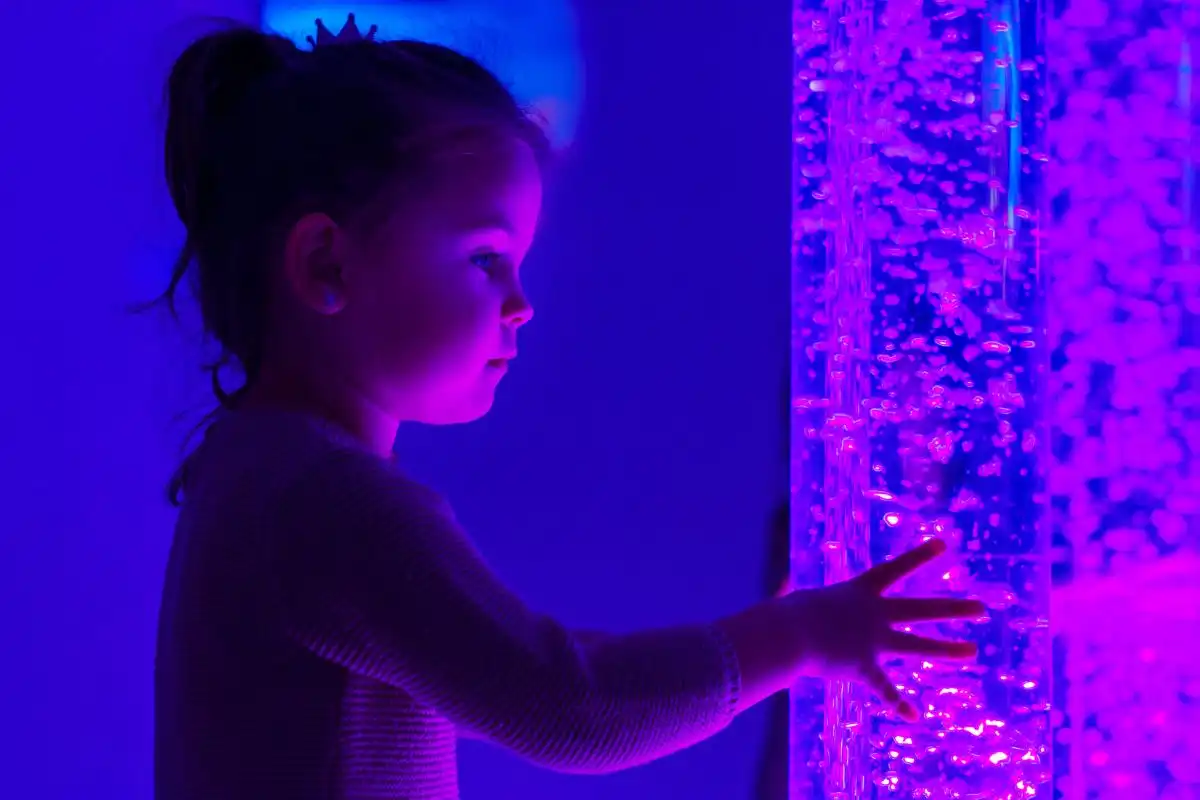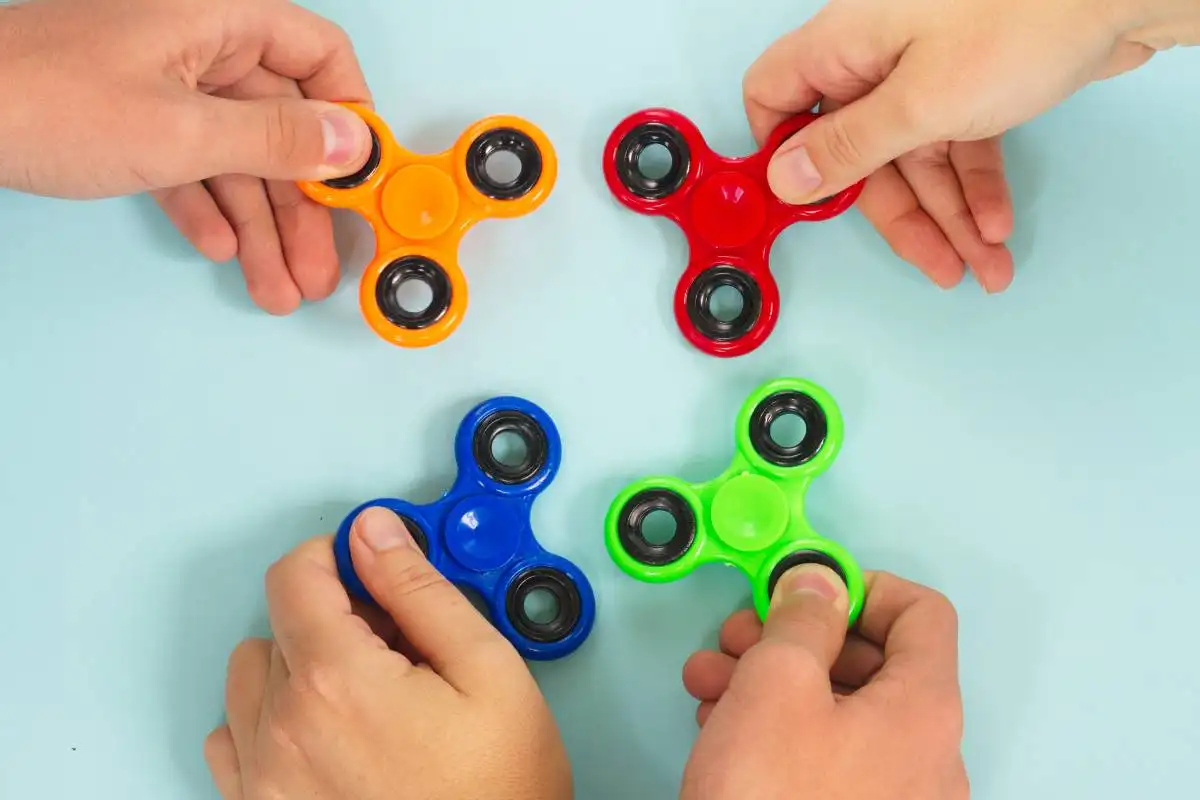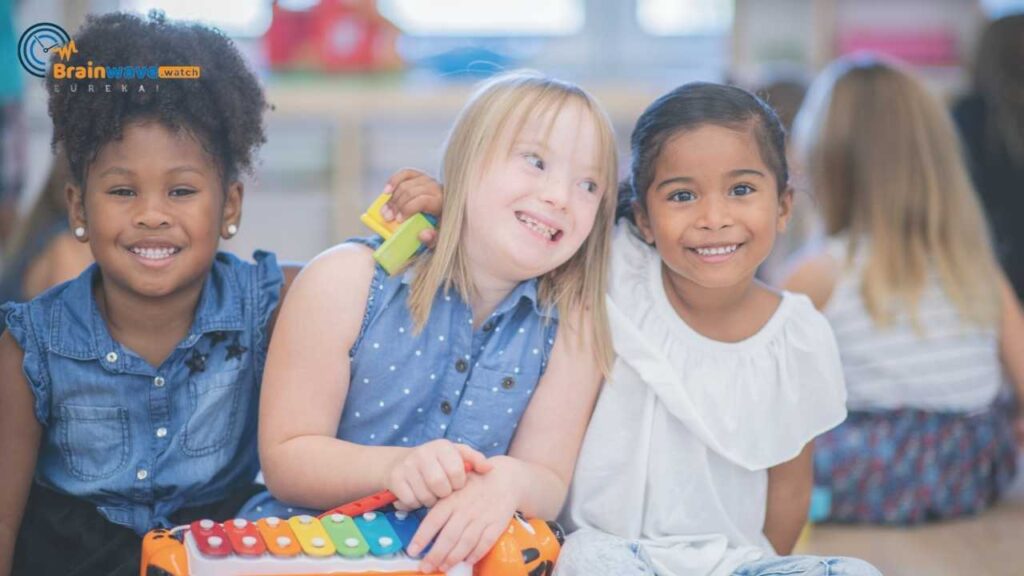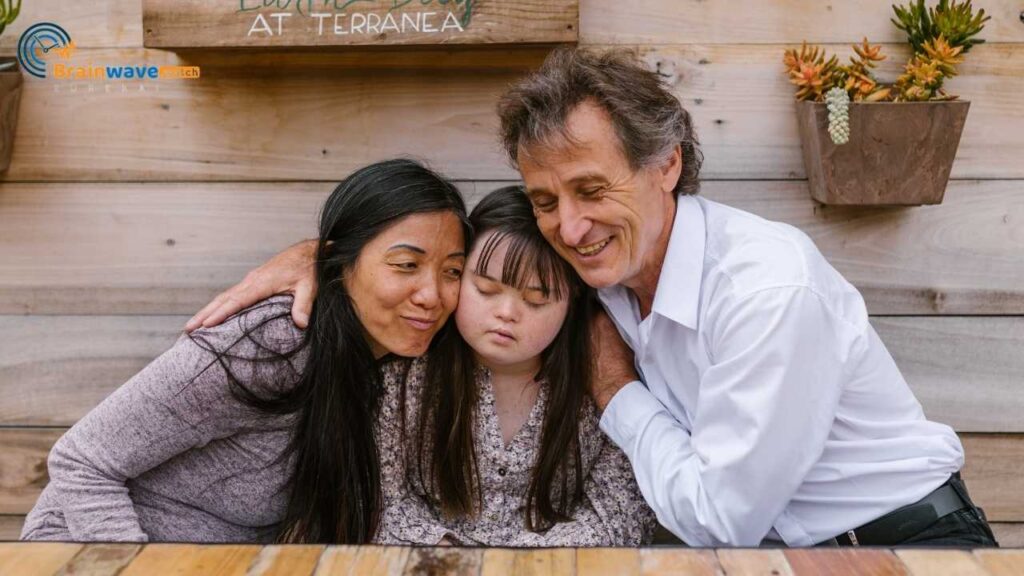A sensory room is a specially designed space that provides a controlled sensory environment for children with autism or other sensory processing disorders. The goal of a sensory room is to help these children develop self-regulation and coping skills by providing calming sensory input or proprioceptive activities.
Sensory rooms allow children to safely explore and interact with various equipment and materials that provide different sensory experiences. Common sensory room elements include soft play equipment like crash pads, vibrating cushions, textured walls or objects, bubble tubes, fiber optic lights, aromatherapy diffusers, music players, and interactive light panels. These multisensory components appeal to different senses like touch, sight, sound, smell, and movement.
Using and regulating sensory input in a structured way helps autistic children improve focus, build confidence, and learn to manage anxiety or challenging behaviors. Sensory rooms create a calming environment where they can relax, stimulate concentration, or positively expend energy. This gives autistic kids a space to self-regulate emotions and develop self-care skills.
Why Have a Sensory Room at Home?
Creating a sensory room at home for an autistic child provides many benefits that can improve their quality of life. Having a dedicated space designed specifically to meet sensory needs can help an autistic child regulate emotions and behaviors. The customized environment acts as a safe space where they can freely engage in sensory-seeking behaviors or find sensory refuge when feeling overwhelmed. This allows the child to self-regulate their senses and process sensory input in a calming, controlled way.
A home sensory room also helps improve an autistic child’s focus and concentration. The space minimizes external distractions and stimulation while providing engaging sensory inputs that hold their attention. This fosters an optimal state for learning and skills development. The private environment may help reduce anxiety and tantrums stemming from sensory overloads. Having access to a sensory room can empower an autistic child with more control over their sensory experience.
Choosing a Space
When selecting a space for a sensory room, it’s important to choose a quiet room with limited distractions. Look for a medium-sized room, around 10 x 10 feet, which provides enough space for some basic equipment without being overwhelming.
Ideally, the sensory room should be on the ground floor for easy access and be situated near the common areas of the home so that supervision is convenient. An unused guest room, office, or basement space can often be repurposed into a sensory room. Avoid setting up the space right next to noisy areas like TV rooms.
Make sure the room has a door that shuts firmly to block outside noise and distractions. Window coverings like blackout curtains can help limit visual stimulation. Minimize clutter and remove unnecessary furniture to keep the space calm. It’s also helpful to locate a room close to a bathroom for easy access.
The space doesn’t need extensive renovations but should have comfortable ventilation and temperature. Clean carpets are ideal for flooring. Finally, ensure there are multiple outlets around the room to plug in sensory equipment.
Lighting
Proper lighting is crucial for an effective sensory room. Here are some lighting tips:
- Install dimmer switches to control the brightness. Being able to dim the lights prevents overstimulation and allows you to create calming environments.
- Use natural lighting when possible. Natural light from windows or skylights has a soothing effect. Consider window placement to control glare and brightness throughout the day.
- Avoid fluorescent overhead lighting which can be harsh. Opt for incandescent, halogen, or LED bulbs instead. Wall sconces, floor lamps, and table lamps allow better lighting control.
- Offer blackout options for some activities. Dark environments are calming for certain therapies. Install room darkening shades or blackout curtains to block all light when needed. Provide blackout tents or even a small enclosed space for this purpose.
The ability to control lighting helps create the right sensory environment for different therapies and activities. Work with occupational therapists to determine ideal lighting features based on your child’s needs.
Colors
When choosing colors for a sensory room, selecting calming, neutral tones that won’t overstimulate is important. Stick to soft blues, greens, tans, and grays. Avoid bright, neon colors like red, yellow, and orange as they can heighten sensory sensitivity.
Cool blue tones are especially soothing and have a calming effect. Green is also a gentle, natural color that evokes relaxation. Neutral tans, beiges, and grays make good backdrop colors that won’t visually distract.
Remember that kids with autism can be extra sensitive to bright, bold colors. Their eyes may perceive them as harsh and jarring. Stick to muted, lighter shades to create a soothing environment. Use accent colors in moderation on small items like pillows or rugs.
Textures & Materials
When choosing textures and materials for your sensory room, including a variety is important. Different textures provide different sensory inputs and enable kids to explore through touch.
Some textures to consider include:
- Soft textures like plush blankets, stuffed animals, pillows, and bean bags. Silky textures are soothing.
- Smooth textures like satin, silk, and soft plastic. These allow hands to glide across the surface.
- Bumpy or nubby textures like corduroy, textured blankets, and rubber mats. These provide sensory stimulation.
- Rough textures like burlap, sandpaper, turf, and rubber nubs. Rough textures give strong tactile feedback.
Having several boxes or bins with various textured materials is a great way to allow kids to explore different sensations. Let them feel and manipulate the textures. You can also incorporate textures into the walls and flooring. Just be sure to avoid anything too rough or scratchy that may cause discomfort. The textures should invite touching, rubbing, squeezing, and investigation.
Furniture
When selecting furniture for a sensory room, choose pieces that provide comfort, safety, and sensory stimulation. Padding is an important element for floors, walls, and furniture. Thick padded mats allow children to play and move freely without risk of injury. Mats can be placed on the floor, leaned against the wall, or used to cover hard furniture edges.
Rocking chairs with cushions provide soothing movement and a cozy spot for relaxing. Large pillows, bean bags, and crash pads make inviting places for lounging or jumping. Weighted blankets and lap pads offer calming deep pressure.
Look for furniture with smooth, rounded edges and avoid anything sharp or breakable. Sturdy, stable pieces are safest for active use. Waterproof and easy-to-clean fabrics are ideal for inevitable spills and messes. Prioritize comfort and choose plush, soft materials whenever possible. The right furniture transforms a room into a calming, comforting oasis.
Equipment
A sensory room has some specialized equipment to provide various sensory experiences. Some key equipment to consider includes:
- Sensory swing – A sensory swing allows for comfortable rocking and swinging motion, which can have a calming and soothing effect. Suspending the swing from the ceiling helps create smooth, consistent motion.
- Crash pads – Large crash pads filled with soft foam provide a safe space for jumping, crashing, and deep pressure input. They allow energetic sensory input in a padded environment.
- Fidget toys – Fidget toys with lights, textures, buttons, switches, and clickers provide various tactile stimulations. They give hands something to do and can help focus attention.
- Bubble tubes – Bubble tubes with colorful bubbling water create engaging visual effects. The bubbles provide calming motion and lighting effects. Tubes are encased for safety.
- Fiber optic lights – Strands of fiber optic lights change colors and patterns to create immersive visual effects. They are ideal for low-light sensory immersion. Waterproof strands allow flexible placement.
Having a variety of specialized sensory equipment creates opportunities for different sensory experiences within the room. Carefully choose options tailored to the specific sensory needs of the child. Ensure all equipment is safe and encourage engagement.
Safety
Supervising the use of the sensory room is crucial. Even if designed for independent use, an adult should still monitor and periodically check on children using the room. Sensory spaces contain furniture and equipment that could pose risks if used incorrectly or in an unsafe manner. Secure all furniture, equipment, and accessories properly to the floor and walls as needed. Store any items that could be hazardous in locked cabinets. Remove choking hazards and use safe, sturdy, and appropriately sized furniture and equipment. Check for sharp edges, points, loose parts, or damage regularly and repair or replace anything unsafe. Consider a video monitor if the room will be unattended at times. Make safety a top priority so the sensory room can provide the intended benefits for autistic children. With proper adult supervision and securing of furnishings and equipment, you can create a safe special space for sensory stimulation and regulation.
Make it Personal
A sensory room should be tailored to meet your child’s unique needs and preferences. Get input from your child and their occupational therapist about what types of equipment and sensory stimuli work best for them. Observe your child’s reactions and make adjustments accordingly.
Some ideas for personalizing the space:
- Incorporate your child’s special interests into the decor. For example, if they love trains, add train-themed items.
- Use your child’s favorite colors when painting the walls or getting rugs/pillows.
- Add pictures of your child, family members, or favorite characters.
- Play your child’s preferred music.
- Use scents your child finds calming, like lavender or vanilla.
- Include fidget toys or objects with textures they enjoy.
- Make sure lighting can be adjusted to your child’s sensory needs.
The sensory room will likely need to evolve as your child grows and their needs change. Make updates periodically to ensure it continues to meet their unique requirements. The space should feel welcoming, soothing, and tailored just for them.













